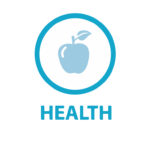
Oral health
Adults
Note
*: Statistically unstable
HHSA Regions: Health and Human Services Agency regions
Data not available:
For 2015;
Race-Ethnicity, for American Indian or Alaska Native, and Native Hawaiian or other Pacific Islander in 2018-2020 and 2021-2023, Multi-Race in 2018-2020
Race-Ethnicity categories:
Race-Ethnicity categories: Latino, While (non-latino), Black or African American (non-latino), Asian (non-latino), Multi-Race: Two or More Races (non-latino)
Source:
California Health Interview Survey (Download date: 12/6/2023, 2/3/2025)
Indicator criteria: Adults ages 18-65 -Never been to dentist, More than 1 year up to 2 years ago, More than 2 years up to 5 years ago, More than 5 years ago
What is the indicator?
This indicator – the percentage of adults ages 18 to 65 who had not visited a dentist within more than one year or ever – represents the proportion of adults who did not have the recommended annual visit to prevent and treat dental disease and decay. These data are routinely reported in the California Health Interview Survey (CHIS).
Why is this important?
More than one in four adults have untreated tooth decay. Lack of dental care leads to gum disease, tooth loss, and oral cancer. Regular preventive dental care is essential for good oral health. The life course perspective points to the importance of a two-generation approach to oral health. Limited use of dental care by parents is related to inadequate oral hygiene and dental care for children. National data for adults show racial/ethnic and income disparities in untreated dental disease. Other factors associated with missed visits to the dentist include lack of insurance, prior dental experiences, and family misinformation.
What strategies can make a difference?
These evidence-based are used across the country to improve adult oral health:
- Enhance access to dental care for both adults and children, particularly through programs like Medicaid (Medi-Cal/Denti-Cal) and broaden coverage within other publicly subsidized health insurance plans.
- Enhance the availability of dental care services in low-income and underserved regions by introducing initiatives like community clinic-based dental services and mobile dental clinics.
- Educate adults and seniors about the scope of their dental insurance coverage.
- Enhance availability of teledentistry programs and services.
- Augment the pool of skilled dental professionals, including dentists and dental hygienists, by increasing training opportunities and offering loan repayment incentives for those willing to serve in low-income communities.